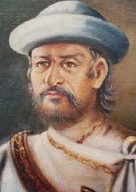Khulal
 |
The "Basnyat" or "Basnet" surname belongs to a family of Nepalese nobility. They are considered to be one of the original noble courtier (Bhardar) families of Nepal along with Pandeys and Thapas. The Basnyats or Basnets are of pure Hindu Kshatriya/ Khas Rajput origin. Kshatriya or varna are also called Chhetri cast in Nepal and India. It is said that they migrated into western Nepal quiet early along with the majority of the early Khas migration. Basnets were migrated to current Nepal from Uttarakhand and Himachal State of current India during 15th to 19th Century and few afterwards. Currently many of the Basnets/Basnyats are found in Nepal and Indian States i.e. Sikkim, Uttarakhand, Himachal, West Bengal, Assam, and Manipur, along with many other countries. Majority of Basnets speak Nepalese language as mother tongue. Although these days, Basnets specially of Dehradun area of Uttarakhand and Himachal state of India speak Hindi as mother tongue.
There are following types of Basnyats/Basnets in Nepal and India. The Shreepali (Saipali, Sirupali/Sripali) Basnyats/Basnets are from Saipal Area. The Khaptadi (Khaptari/Khabatari/Basnyat/Basnet of Khaptad. The Khulal Basnyats/Basnets, Lamichhane Basnyat/Basnet are from Lamichhana, the Balami Basnyats, etcs. The surname Basnyat/Basnet is now used interchangeably by all these clans.
The Shreepali Basnyats existed in Gorkah before King Prithivi Narayan Shah unified Nepal and got much prominence during the rule of King PN Shah. They worship "Sishakoti Madhev","Veerabhadra","Mahakali" as their Kul Deuta and Aradhe Devi "Dakchinkali" as Istha deuta. They were very powerful during the unification of Nepal. They remained powerful till the emergence of Jung Bahadur Kunwar or later known as Jung Bahadur Rana.
It is known that during the reign of King Prithivi Narayan Shah the Shreepali Basnyats of Gorkha were the leading military force. They were either highly ranked officers in the army or key figures in the king's court. King Prithvi Narayan Shah formed an alliance with Basnyat and Pande families of Gorkha in his quest for the unification of Nepal. Shivaram Singh Basnyat, the commander of Gorkhali forces belonged to Shreepali Basnyat clan. He was son of Jaya Ram Singh Basnyat. As per his Divya Upadesh, King Prithvi Narayan is known to have arranged the marriage between Kazi Kehar Singh Basnyat, the second son of Senapati Badabir Shivaram Singh Basnyat, and Chitra Devi, the daughter of Kazi Kalu Pandey. Shivaram Singh Basnyat, who is addressed as Senapati Badabir (Brave Chief of the Army) in all the documents of that era, laid down his life in the battle of Sanga Chowk,at a place called Jahar Singh Pauwa on 24 February 1746 A.D. (12 Falgun 1803 B.S.) 3 km northwest of Nagarkot. Shivram Singh became the first major military leader of Gorkha who was martyred even before Kazi Kalu Pande in the campaign of unification of Nepal. Later, Birangana Shoorprabha Basnyat, widow of Shivram Singh, constructed the Narayan temple in Timal Danda (Kavre) in honour of her husband Senapati Badabir Shivram Singh. 'Birangana' Shoorprabha was a daughter of Bagale Thapa of Gorkha, who raised her four brave sons after the early martyrdom of her husband.The story of Shoor Prabha is written by former Vice Chancellor late Rudra Raj Pandey in his epic "Nepal ka Bir Birangana Haru".
...
Wikipedia
